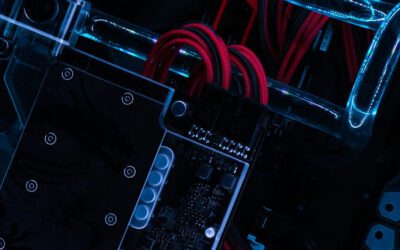Noticing and keeping up with design trends is one of the biggest parts of my job and also one of my favorite parts. Similarly to why I loved art history so much in college, design is an expression of what is going on in society, although on more of a popular and every day level than with fine art. Keeping things current and modern, yet still letting your individual personality shine through is an important way to connect with your audience and stay up to date and relatable. Your website is a valuable chance to get undivided attention from your visitors, even if it’s just for a minute. The goal for websites is engagement, keeping people interested and clicking and staying on your site until they send that contact email.
Interaction is one of those things that keep people clicking or scrolling, and interested in where they’re going next. It uses animation to have elements flow into a page or having the mouse trigger something fun. I’m not referring to big over-the-top Flash animation from the early 2000s, but something more subtle called micro-interactions, that aren’t too distracting but are just a bit delightful. (Not really a word that I use too often, but I think it fits. Cool is overused.) These micro-interactions help to guide your visitors through your site with call-to-actions leading them where you’d like them to go and to help them to easily find the information that they’re seeking about your work.

The days of beige seem to be winding down, and vibrant color is showing up everywhere, especially in limited palettes of 4 colors or less. (Often using black as the main neutral color.) That keeps things simple while being unique with unexpected color combinations. Glossy or blurred gradients are still being used everywhere, from the background to an entire brand to tiny details like icons and buttons. Notice the geometric shapes that are popping up on packaging and things, sometimes even with squiggles, almost feels like we’re going back to the 1980s, in a whole new way. And they’re vector illustrations, which is really refreshing to see illustrations again. Imperfect and drawn by a human.

Bold typography makes a statement and an impact, Fonts are taking center stage in some designs, making them so large that in some cases, they ARE the design. Everyone loves simple modern sans serif lettering, but serif fonts are getting more ornate in contrast. Some fonts even with a combination of both serif and script lettering. This whole idea of making things very large plays into other areas of a website, such as an enormous footer at the bottom of each page (such as this one), almost like a second navigation and easy access to social media, newsletter signups, etc. The footer isn’t just used to link to the Privacy Policy page anymore.
Visible grids, dividing up sections of the website from each other with thin lines and frames continues to be a cool look, and also a very practical way of keeping things organized. Layering images on top of each other and having them slide into the page at various times, seemingly random and natural like a scrapbook is continually seen in a lot of places and it gives an alternative to big hero images. (Here is one of the best examples I’ve found to explain what I’m referring to.) “Brutalist” style websites, named after the architecture movement, brings in unexpected overlapping of elements, sideways fonts, neutral color schemes with maybe one bright color, and minimalist and formal imagery.

I could go on and on, but there are more. The intentionally ugly or “bad” aesthetics of anti-design, is appealing a lot to younger audiences, and it has a messy 90’s low-tech vibe. It seeks to go against the uniformity and perfectionism of mainstream branding by not taking itself seriously. Grainy retro photos with vintage looking fonts are making an appearance, usually with European subjects from another place in time. And last but not least, artificial intelligence and the slick smooth images that it creates, or the surreal combination of elements to create something we’ve never imagined.
The addition of a bit of micro-interaction, a change to a more modern font, or even just using a different image for the landing screen can make your current website feel updated. And with just a light touch, your own personal style will still be the primary focus. Get in touch if you’d like to talk about a refresh or a whole redesign.



